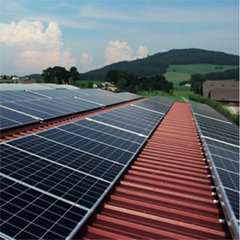There is a dark cloud hanging over solar energy. Despite frequent government pushes for wider adoption of renewable power sources, progress in recent years has been relatively slow. Here, Steve Hughes, managing director of power quality expert REO UK, explains there may be a way to part the clouds in solar energy.
Since the mid-1990s, the UK has seen a gradual increase in the amount of renewable energy sources used to generate electricity. However, in spite of two decades of growth and countless incentives and schemes, we are still trailing behind the target of producing 20 per cent of the UK’s electricity generation from renewable sources, with current estimates being 15 per cent.
Until 2011, only a small amount of this electricity came from solar energy. Since then, the falling price of photovoltaic (PV) panels and the introduction of feed-in tariffs have driven a surge in sales. Recent government figures showed that UK solar capacity has increased by 62 percent from February 2015-16, with previous findings also indicating a recurring trend of capacity greatly increasing in April.
What we can deduct from these findings is that, while widespread renewable uptake has been poor in relation to the electrical capacities of other energy sources, the UK is taking steps in the right direction. With further plans to power four million homes with solar energy by 2020, the future is looking bright for renewable energy.
It is understandable why so many businesses and consumers alike are switching to solar. Once initial installation costs of PV panels are out of the way, solar energy offers a unique approach to generating both electricity and money, by feeding excess energy back into the grid, while also meeting green guidelines.



























